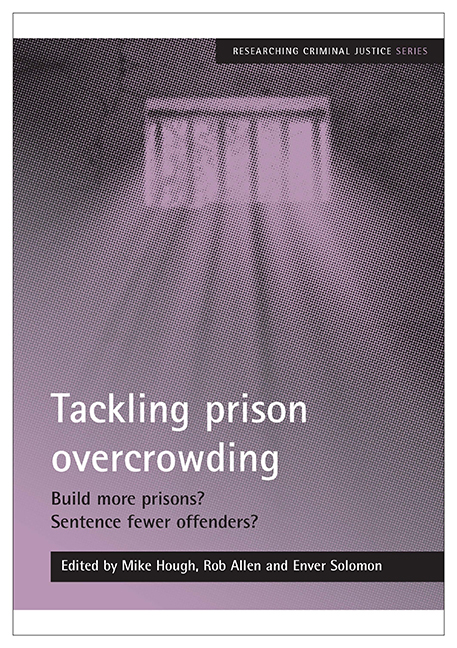Book contents
- Frontmatter
- Contents
- List of figures and tables
- Acknowledgements
- Foreword
- Notes on contributors
- 1 Introduction
- 2 The prisoners’ dilemma in England and Wales
- 3 Building on sand: why expanding the prison estate is not the way to ‘secure the future’
- 4 Towards more consistent and predictable sentencing in England and Wales
- 5 ‘Titan’ prisons: do size, efficiency and legitimacy matter?
- 6 Private punishment? An examination of the expansion, development and employment relations of private prisons
- 7 Reducing the use of custody as a sanction: a review of recent international experiences
- 8 Where now?
- 9 Endnote: latest developments in penal policy
4 - Towards more consistent and predictable sentencing in England and Wales
Published online by Cambridge University Press: 25 March 2023
- Frontmatter
- Contents
- List of figures and tables
- Acknowledgements
- Foreword
- Notes on contributors
- 1 Introduction
- 2 The prisoners’ dilemma in England and Wales
- 3 Building on sand: why expanding the prison estate is not the way to ‘secure the future’
- 4 Towards more consistent and predictable sentencing in England and Wales
- 5 ‘Titan’ prisons: do size, efficiency and legitimacy matter?
- 6 Private punishment? An examination of the expansion, development and employment relations of private prisons
- 7 Reducing the use of custody as a sanction: a review of recent international experiences
- 8 Where now?
- 9 Endnote: latest developments in penal policy
Summary
The structure of sentencing guidelines in England and Wales is likely to undergo a significant transformation following publication of the final report of the Sentencing Commission Working Group. The Working Group has rejected the creation of a US-style sentencing commission for England and Wales (2008b), having made clear in its consultation paper that it had also decided against the introduction of a US-style sentencing grid for this jurisdiction (Sentencing Commission Working Group, 2008a). Both decisions are consistent with the submissions made to the Working Group (see Sentencing Commission Working Group (2008c) for a summary). Time will tell, but it seems likely that the government will now proceed to implement the Working Group's recommendations to fuse the Sentencing Advisory Panel (SAP) and the Sentencing Guidelines Council (SGC) and to enhance the resources, profile and functions of the new agency. Where do these developments leave us?
In this chapter we offer some commentary on issues surrounding sentencing guidelines in England and Wales, and suggest some ways in which sentencing in this jurisdiction may be enhanced still further. We focus on a small number of important questions: (i) what kinds of sentencing guidelines are appropriate for England and Wales? (ii) is the current ‘departure’ test for sentences falling outside the guidelines adequate to ensure a sufficient level of compliance with the guidelines? (iii) should sentencing guidelines be sensitive to prison capacity, and if so how? and (iv) should a guidelines authority such as the SGC have a community engagement function, as is the case with sentencing authorities in some other jurisdictions? Our answers to these critical questions are preceded by a brief discussion of the nature of the problem to which sentencing guidelines are a response, and a review of the nature of sentencing guidelines in this country and elsewhere.
The problem of prison overuse
The problem of prison overuse has been well-documented (see Hedderman, this volume). Since the early 1990s, the number of offenders sentenced by the courts has been broadly static. Crime rates for many offences have fallen steeply, yet the prison population has almost doubled since 1992, rising more rapidly than at any time since 1945. We have obviously made a value judgement in characterising these trends as representing an overuse of custodial sentences.
- Type
- Chapter
- Information
- Tackling Prison OvercrowdingBuild More Prisons? Sentence Fewer Offenders?, pp. 43 - 62Publisher: Bristol University PressPrint publication year: 2008



